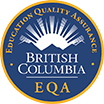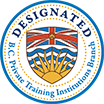Counselling Skills III
Course Detail
Students will read the required textbook or manual for each section below and answer a series of essay-type questions relating to the material in the textbook. They will submit their answers by uploading them to Moodle.
The Instructor will evaluate the answers and give the student a mark. 80% is a pass for each section. To pass, the student must attain an 80% average in all 3 courses.
The Instructor will provide support if needed for the duration of the program.
DSM V (30hrs.)
Course Outline:
- Counsellors are not trained or authorized to make mental illness diagnoses. By the end of this course, students are introduced to the various updates of information presented in the new DSM-V and will have an understanding of the eight primary spectrums of mental illness and secondary mental illness disorders.
- The objectives of the course are to look at mental illness across the spectrum of severity and symptoms.
- Allowing the counsellor to understand the uniqueness of the client and their manifestation of mental illness from the DSM-5 perspective. With an emphasis on helping counsellors understand and remember complex mental illness ideas and concepts; through cartoons, mnemonic devices, summary tables and simple case studies.
Learning Objectives
- To clearly understand changes in the new DSM-5.
- To be introduced to the spectrum approach to mental illness.
- A clear understanding of the eight spectrums of mental illness, the categories, and the full complement of symptoms.
- The Depression Spectrum: Shallowness versus Despair, The Mania Spectrum: Boring versus Bipolar, The Anxiety Spectrum: Carelessness versus Anxiousness, The Psychosis Spectrum:
- Visionless versus Psychotic
- The Focusing Spectrum: Attention Deficit Disorder versus Obsessive-Compulsive Disorder
- The Substance Abuse Spectrum: Ascetic versus Addicted,
- The Autism Spectrum: Codependent versus Autistic
- The Personality Spectrum: Neurotic versus Obnoxious.
- A clear understanding of the secondary mental illness disorders: Trauma and stressor Related Disorders, Neurodevelopmental Disorders, Neurocognitive Disorders, Dissociative disorders,
- Somatic Disorders, Feeding and Eating Disorders, Sleep Disorders, Gender Dysphoria, Sexual Dysfunctions, Paraphilic Disorders.
Group Therapy
Course Description
- By the end of this course, students will be introduced to a wide range of settings in which group therapy may be offered. They will begin to understand the strengths and weaknesses of group therapy, the demands of group therapy, and the unique variables found and offered in the group therapeutic process.
- Through the study of individual cases, students will explore ways to choose, adapt and implement models of group therapy most suited to a group’s goals.
- Although this course focuses on imparting pivotal information for beginning therapists, it also provides updates for therapists advanced in group therapy.
- Case studies were viewed through the lens and experience of 17 clinicians.
- This course provides a balance between valuable theoretical information and practical instruction.
Learning Objectives
Through exploration, a deeper understanding of:
- History of group therapy.
- Group therapy modalities;
- Adlerian, Psychodynamic, Existentialism, person-centred, Transactional Analysis, General Systems Theory, Gestalt, Rational Emotive Behavioral Therapy, Focal Conflict Paradigm, Psychoanalytical, Basic Assumptive Model, Reality Therapy, Here-and-Now Modality.
- Practical considerations when beginning a group – Setting, client inclusion, and cohesion.
- Problems in group dynamics – resistance and self-protection.
- Transference and Countertransference.
- Creative and successful interventions.
- Negative experiences.
- Group therapy specialties
- Ethical issues.
- Group therapy and the Internet.
Trauma and Recovery (30Hrs.)
Course Description
- Trauma and recovery is the crucial text to understanding trauma and trauma survivors.
- This course will offer counsellors research on domestic violence, combat and political terror. Trauma from the individual perspective as well as the societal perspective.
- From the introduction: “Trauma and Recovery represent the fruits of two decades of research and clinical work with victims of sexual and domestic violence.
- It also reflects A growing body of experience with many other traumatized people, particularly combat veterans and the victims of political terror.”
Learning Objectives
This course will offer students a deeper understanding of the complexities and diversity of PTSD and other trauma-related disorders.
- Dissociation.
- trust issues.
- Intrusion.
- Hyperarousal.
- Construction.
- The history of trauma Societal rules and trauma, trauma patterns, and perpetuating trauma.
- The Stages of Recovery The Healing Relationship Rebuilding safety Restoring Control Memories and Mourning – Reconstructing the Story, Transforming Traumatic Memory
- Finding self again.
- Re-emerging back into the world.
- The uniqueness of each person’s recovery process.



